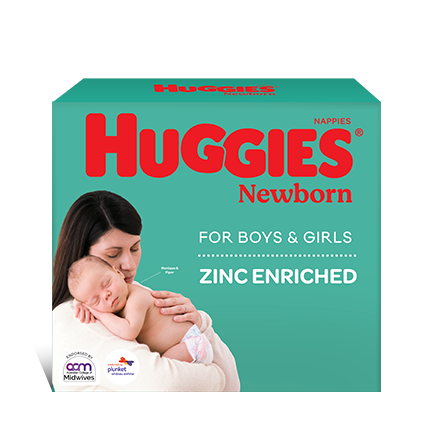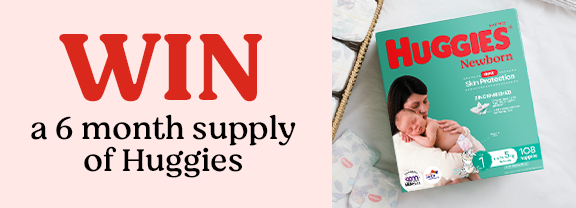Babies have always found a way of getting their messages across. Starting before they are even born, they aim to communicate via their movements and responses to outside stimulus. Hearing their parent’s voices, some familiar music or even the family dog barking will often prompt a kick or jab in response. Far from being isolated from the outside world, babies want to interact from the moment they can move.
So it makes sense that after birth, they continue this interaction by means of crying, moving their limbs, staring and trying to focus with their eyes. But until they can learn to talk and make themselves clear, babies can become very frustrated in trying to get their point across. They know what they want, but getting their parents to understand this clearly takes a mutual level of understanding.
What is baby sign language?
Supporters of baby sign language say this technique offers a means of helping pre-verbal, hearing babies to communicate with their parents and caregivers. Using many of the skills which have been designed for the deaf community, parents can teach their babies to convey what they want by using their hands. In return, parents use their voice, face and hands to communicate back. Essentially, baby sign language is designed to help babies use the skills they instinctively have to help their parents understand them.
There are many programmes which parents can subscribe to. Currently, the most popular one in Australia subscribes to the principles of “Auslan”, the official sign language of the Australian deaf community. For a fee, parents buy a programme which may include a DVD, a book, flash cards and laminated charts or posters which highlight the common signs and instructions on how to use them.
How old does my baby need to be before I start?
There is no agreed consensus on the best age to start teaching babies to sign. The majority of programmes state that there is probably little benefit to starting before six months, because before then, babies don’t have too much motor control of their hands. Between six to nine months is seen as the optimum time to start. There is no harm in trying earlier if parents are motivated to do so, as long as it isn’t forced onto the baby who may not seem interested at all.
Getting your baby’s attention and being able to hold it for up to ten seconds can be a helpful starting point and is one of the readiness signs.
But before then, parents can help with general preparedness by being receptive to their baby’s cues or signals for what they want. The pitch and tone of their baby’s cry, their facial expressions, the way in which they move their body or respond to their parents are all ways that babies communicate. For parents to be tuned in can take time and it is not always intuitive.
What are the benefits of using baby sign language?
Supporters of baby sign language say it is beneficial in many ways. Some of the general benefits are thought to be:
- Enhanced communication between a parent and their baby. Often, first time parents are able to invest more time and effort into learning baby sign language. If they found it beneficial and they can remember the strategies they may do it again with subsequent children.
- Baby sign language offers babies a means of communicating what they want before their speech and language skills have developed sufficiently for them to be able to do this.
- It may reduce frustration for babies who are otherwise unable to communicate because of their immaturity.
- Baby sign language may help with confidence building and self-esteem. Supporters say that because the baby feels their parents are making an effort to understand them, the baby feels more self-assured.
- May help with a smoother transition to spoken language. Baby sign offers a natural and easier transition to verbal speech so babies that are familiar with signing, feel greater motivation to learn to speak. Research has shown signers have more spoken words between the ages of 2 and 3.
- In relation to long-term benefits, there doesn’t seem to be any. Once a baby learns to speak and can use words to convey what they want, sign language tends to be obsolete. The benefits of enhancing interaction though are lifelong. Babies who feel a strong sense of emotional connection through interaction with their parents, tend to have a greater sense of security as adults. Research may indicate longer term benefits of +12 IQ points at 8 years old in children taught to sign as toddlers.
What our members have been discussing in the Huggies forum
Here is a question from Lilee,Ryder&Squidgy about baby sign language – she was 15 weeks pregnant when she posted this:
Lilee, Ryder & Squidgy
“Does anyone do this with their baby and if so do you find it a great help? Also which programme would you recommend getting?”
This is what ddfbcd responded with:
ddfbcd
“We found it to be wonderful and we managed to avoid a lot of confusion as our little girl was able to let us know what it was she wanted.I would recommend Baby Einstein’s “First Signs” video. It was most helpful."
Are there any risks?
Parents need to be realistic about their baby’s responses to sign language. Expecting too much too soon can be frustrating for everyone and defeats the point of the exercise. Like anything else, there needs to be a balance in our environments and this is especially true for babies. Doing sign language exclusively and not allowing a whole range of communication modes could be harmful.
Often, parents find they cannot access adequate information about individual programmes without transferring money first. Although the benefits and advantages of teaching baby sign language are stated clearly by the businesses selling programmes, just how it is done is not exactly clear. Most of the baby sign language options are available through the internet.
What if I do it the wrong way?
Parents and their babies have been signing between each other since time began. Waving bye-bye, games like “Open Shut Them” and “Incy Wincy Spider” all involve some forms of signing. Nursery rhymes with actions like “twinkle twinkle little star”, and “This Little Piggy” are all ways in which language and actions are linked. Most parents and their babies develop their own personal language which combines spoken words with body and hand actions. So even if you aren’t subscribing to a formal programme of baby sign language, you are probably doing some form of it every day anyway, just as your parents did for you.
How long do I need to do it for?
There is no recommended time when baby sign language should formally stop. Gradually babies develop skills in their speech and language so they have no need to sign any more. There is no harm though in continuing to do it for as long as the baby and parents are happy to participate. Having your own “secret” means of communicating can be fun and become one of those comfortable, fun family rituals which help to unite us.
General tips on using baby sign language
- Get the whole family involved. Consistency and patience are the keys with learning any new skill and sign language is not exempt. Practice and repetition every day, at times when everyone feels fairly motivated will help.
- Don’t feel as if you need to subscribe or sign up for an expensive sign language programme. Think about developing your own natural sign language, which feels right and is based on simplicity. If you want to teach your baby the sign for hunger for example, rub your tummy, thirst could be the motion of bringing a cup to your lips, tired could be placing your tilted head on your hands. Use the correct words such as hungry, thirsty and tired as you mime the actions.
- Not everyone is an advocate of using Auslan for babies as they feel it could be too complex. There are no rules about the form of sign language you can do, but whatever you choose needs to be consistent and work for you and your baby.
- Your baby may come up with their own signs for what they want. Follow their lead but remember to speak verbally at the same time you are using your hands. One without the other just doesn’t work.
- Don’t expect your baby to convey feelings or messages which are beyond its cognitive age. Sign language relies on a baby’s growing understanding of their influence and interaction with the people around them. It’s not an indication of intelligence or brain maturity and teaching baby sign language to your baby will not help him or her to become smarter. What will is your stimulation and the quality time you spend with them, whether sign language is a part of this interaction or not.
For more information see Parenting .
Last Published* May, 2024
*Please note that the published date may not be the same as the date that the content was created and that information above may have changed since.






















